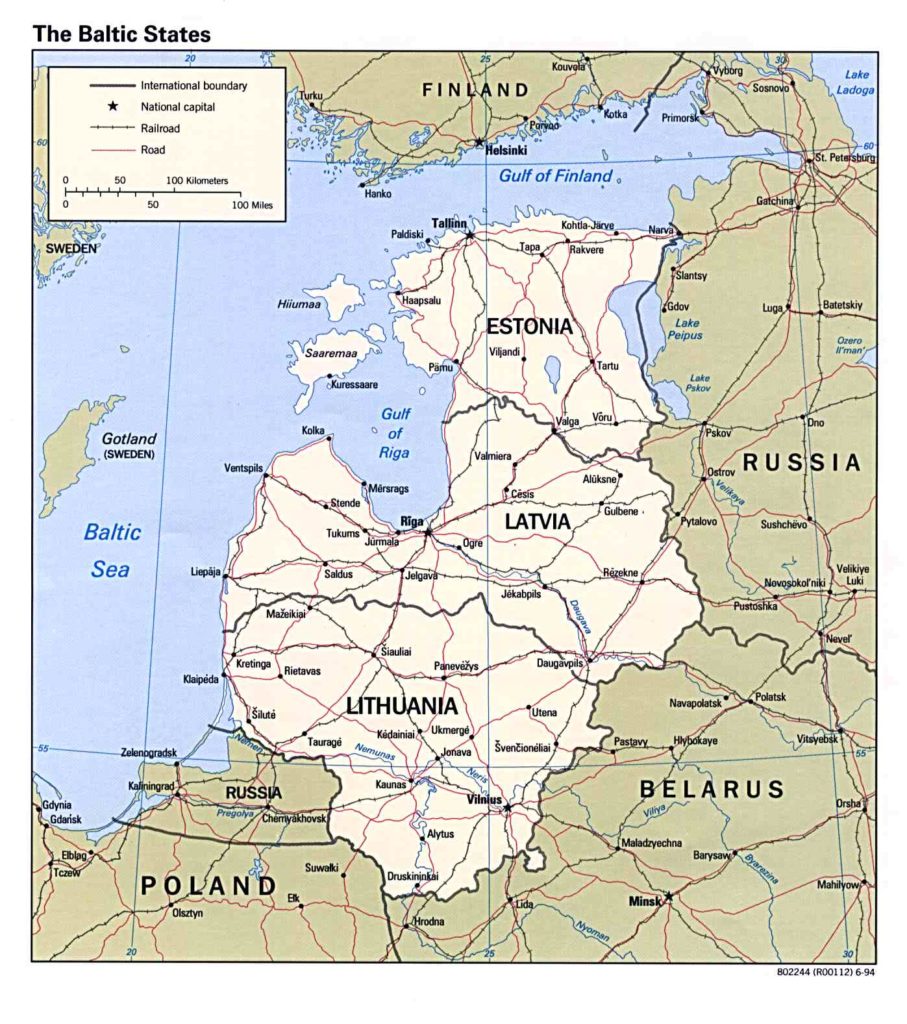
RAND’s wargame that explored a potential Russian invasion of the Baltic countries continues to feed a robust debate within the ranks of strategic analysts.
Michael Kofman assessed the premises of RAND’s wargame and expressed skepticism of the call for a buildup of American and NATO ground forces to deter Russian military aggression. Kofman argued instead that
The way forward is to shore up deterrence by punishment, which has been working just fine all these years. That means leveraging U.S. airpower and the Navy as a global force able to horizontally expand the theater of conflict and inflict colossal military and economic punishment on Russia should it aggress against a NATO member state. As a consolation to AirLand Battle warriors, perhaps we can call the strategy Air-to-Land Battle. It also means the United States must focus on mobility in theater and assets that counter, rather than match, the Russian military. This is why Gen. Ben Hodges, commander of U.S. Army Europe, is right in arguing that the number one need is for Army combat aviation in Europe. The United States should also revisit the nuclear toolkit, since the credible threat of nuclear escalation had always been an important pillar in deterring Russian aggression against NATO.
In rebuttal, RAND’s Karl Mueller, David Shlapak, Michael Johnson and David Ochmanek defended the focus of their wargame, arguing that “the whole point of the games was to explore, develop, test, and refine concepts, based on our best — and evolving — understanding of Russian doctrine, tactics, and capabilities, as well as NATO’s extant capabilities and options for enhancing them.” They take specific issue with Kaufman’s emphasis upon threats of post hoc punishment.
In contrast, deterrent approaches that depend upon threatening to punish Russia for occupying the Baltic states after the fact, as Kofman prefers, would be susceptible to Russian leaders imagining — rightly or wrongly — that these threats would not actually be carried out. Similarly, a threat by the Baltic states to wage prolonged partisan warfare against an occupying force might well lack credibility given the potential costs to the populace of doing so, especially against an occupier as ruthless as the one that razed Grozny. Leaving the Baltic states to fend for themselves in the event of an invasion would also represent a catastrophic failure by NATO to honor its Article 5 responsibilities.
A NATO strategy based on temporarily accepting the inevitability of an invasion succeeding and instead mobilizing an overwhelming force to counterattack against Russian forces and liberate the Baltic states might encounter similar skepticism in the Kremlin. It would depend on the alliance remaining determined to right the wrong through costly military action even after months of Russian reinforcement, propaganda, and subversion. Moreover, Moscow might well persuade itself that threats to use nuclear weapons in defense of Kaliningrad (which would stand in the way of a counteroffensive as a “nuclear landmine” in Kofman’s incisive turn of phrase) and its newly acquired territory in the Baltics would be sufficient to deter NATO from carrying through with a “we shall return” promise. Indeed, such an expectation could prove to be correct.
The arguments and criticisms made by Kofman and the RAND team are thoughtful, well-reasoned, and well worth the time to peruse. They also demonstrate the insight that wargaming can bring to strategic problems.
However, the question that comes to my mind is, what strategic interest would Russia serve by invading the Baltics in the first place? Even without NATO imposing extra costs through an active defense, occupying them would reap negligible, if any, political, economic or military advantages for Russia, and would likely impose significant costs in terms of damage to relations with the West. It would also entail an expensive military occupation and suppression of a potential insurgency. Unfortunately, wargaming the correlation of forces does not seem to be able provide a plausible strategic motivation for such a Russian gambit to begin with.

Sanctions and Isolation bring down any ailing Systems, without firing one bullet. It was not the Mujahideen who stopped the Soviet onslaught in Afghanistan, it was their unflexible government, paired with a bad economy which was unable to undergo reforms. Reagan realized this (althought being a bad economist himself), he kept them at bay with rather uncomplicated strategies.
The proxy wars pose a bigger threat, all out invasions are beyond dispute for any military power right now.
As Oscar Jonsson & Robert Seely formulated it in Russian Full-Spectrum Conflict: An Appraisal after Ukraine in the journal of slavic military studies: “Old wine in a new bottle”. Russia’s goal is to wear these countries down economically, until they can establish a puppet/pro Russian government, in that respective state.
The most important thing for the US right now, is to focus on their Allies in the Western and Middle European Theatre (the worst thing for the baltics would be a pro Russian Germany or France).
I forgot to mention that the combined NATO power exceeds the Russian war making potential by far, however this alliance is more fragile than one might think, there is no consensus, only unwillingness to combine their efforts. Russia’s large territory is one of the best defences they possess and an overextentsion could have fatal consequences.
http://www.globalfirepower.com/countries-comparison-detail.asp?form=form&country1=united-states-of-america&country2=russia&Submit=COMPARE
If we compare the assets, we can clearly see that Russias focus is on a U-Boat fleet and they are heavily investing into AFVs. Quantitatively they posses more MLRS, Arty and Tanks, this clearly suggest offensive, expansionistic plans (this Parallel reminds me of Stalins and Marsh. Mikhail Tukhachevsky war‐economic planning 20-40s: Samuelson).